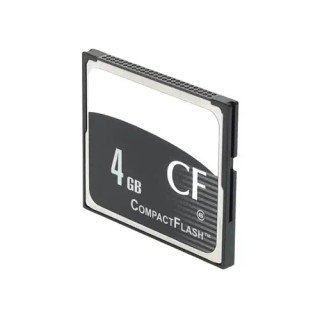Understanding Network Memory: A Key Component in IT Hardware
Discover the role of network memory in IT hardware, its impact on networking performance, and how it optimizes computer hardware for seamless data transfer.

In today’s fast-paced digital world, IT hardware plays a crucial role in ensuring seamless communication and data processing. Among the various components that make up a high-performance network, network memory is an essential element that often goes unnoticed. Understanding network memory, its significance in computer hardware, and its impact on networking performance is vital for businesses and individuals looking to optimize their systems.
This article delves deep into the concept of network memory, its types, advantages, and how it improves the efficiency of IT infrastructure.
What is Network Memory?
Network memory refers to storage components within networking devices that facilitate faster data access and improved network efficiency. It is responsible for caching, buffering, and storing critical data to enhance networking performance. Unlike traditional RAM in computer hardware, network memory is specifically optimized for handling network traffic and reducing latency in data transmission.
Some common examples of network memory include:
- Cache memory in routers and switches
- Network-attached storage (NAS) devices
- Content delivery networks (CDN) storage
- Distributed memory systems
Types of Network Memory
1. Cache Memory
Cache memory is an essential type of network memory that stores frequently accessed data to reduce response times. It is commonly found in routers, switches, and proxy servers, helping to improve efficiency by minimizing data retrieval from slower storage systems.
2. Buffer Memory
Buffer memory is used in network devices to handle data transmission delays and congestion. It temporarily stores data packets before forwarding them, preventing packet loss and ensuring smooth networking operations.
3. Network-Attached Storage (NAS)
NAS is a specialized IT hardware component designed for centralized data storage. It allows multiple users and devices to access shared files seamlessly, enhancing collaboration and data security.
4. Content Delivery Network (CDN) Memory
CDNs rely on network memory to cache and store web content across multiple servers worldwide. This reduces the distance between users and servers, improving website loading speeds and overall user experience.
5. Distributed Network Memory
In cloud computing and large-scale data centers, distributed network memory spreads data across multiple machines. This setup enhances redundancy, fault tolerance, and networking performance.
The Importance of Network Memory in IT Hardware
Network memory plays a pivotal role in optimizing IT hardware by enhancing:
- Speed and Efficiency: Faster data retrieval reduces latency and improves network response times.
- Network Performance: Efficient data caching and buffering lead to smoother traffic flow and lower congestion.
- Scalability: Advanced network memory solutions support business growth by accommodating increased workloads.
- Data Security: Secure memory storage ensures protection against unauthorized access and data breaches.
How Network Memory Enhances Computer Hardware Performance
1. Reducing Latency in Data Transmission
One of the biggest advantages of network memory is its ability to reduce latency. By storing frequently accessed data closer to the processing unit, network memory minimizes the time required for data retrieval. This is especially important in high-performance computing environments and large-scale data centers.
2. Improving Bandwidth Utilization
Efficient networking relies on proper bandwidth allocation. Network memory helps optimize bandwidth usage by reducing redundant data requests and efficiently managing traffic. This results in better overall performance and cost savings.
3. Enhancing Security and Data Integrity
Many computer hardware components use network memory with built-in security features to prevent unauthorized access and data corruption. Encrypted storage and secure access control mechanisms ensure data integrity and compliance with industry standards.
4. Supporting Cloud Computing and Virtualization
As businesses increasingly adopt cloud computing and virtualization technologies, network memory plays a vital role in ensuring smooth operations. Virtual machines, cloud storage, and remote access services rely on fast and efficient network memory to provide seamless user experiences.
Choosing the Right Network Memory for Your IT Hardware
Selecting the best network memory depends on various factors, including:
- Use Case: Determine if the memory is needed for routers, switches, data centers, or cloud services.
- Capacity and Speed: Ensure that the memory meets the performance requirements of your network infrastructure.
- Security Features: Look for encryption and access control mechanisms to protect sensitive data.
- Scalability: Choose solutions that can grow with your business needs.
Future Trends in Network Memory and IT Hardware
With advancements in computer hardware, network memory is evolving to meet the demands of modern networks. Some emerging trends include:
- AI-Optimized Memory: Artificial intelligence (AI) is being used to enhance memory management and predictive caching.
- Edge Computing Integration: Network memory is increasingly being deployed at the edge to improve real-time processing.
- Quantum Computing Influence: Future quantum networks may rely on advanced memory architectures for ultra-fast data processing.
Conclusion
Network memory is a crucial component of IT hardware, significantly impacting networking performance and overall efficiency. Whether it’s reducing latency, optimizing bandwidth, or enhancing security, network memory plays a vital role in modern computing environments.
By understanding the different types of network memory and their applications, businesses and individuals can make informed decisions about their computer hardware investments. As technology advances, staying updated on network memory trends will be essential for maintaining a high-performance IT infrastructure.
What's Your Reaction?


















